With the quarter-finals done and dusted, largely on expected lines, it is fair to say that the best four teams on paper and current form have made it through to the semi-finals. The quarter-finals also signalled the end of ODI cricket for four cricketing giants of the game – Sri Lankan legends Kumar Sangakkara, Mahela Jayawardene and the Pakistani duo of Shahid Afridi and Misbah-ul-Haq.It is perhaps sad that none of these managed to set the stage alight in their swansong, though it has to be said that Sangakkara might have, had he received more support from the other end. Unfortunately, it was not enough for him to make this team based solely on the performances of the players in the quarter-finals.However, let’s take a look at the players who did. As stated earlier, the list has only two criterions:- It is based on the performances of the players in the quarter-finals alone- This is not a list of the best XI players but a proper team capable of playing on any surface. Hence, the composition and mix of the team has been given paramount advantage
#1 Martin Guptill - 237* (163)
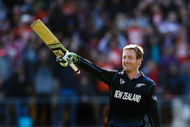
No prizes for guessing this one. In fact, if you thought he probably wouldn’t have made it, you are perhaps from one of the West Indian islands. Inside a glitteringly beautiful Westpac stadium, Martin Guptill churned out one of the most memorable knocks ever to ensure the home team supporters don’t stop partying well into the night.
Having lost his captain early for the second time in a row, he donned the role of a grafter and watchfully scored his first 50 runs in 64 balls. Once he reached his century in the 35th over, there was simply no respite for the bowlers thereafter.
Such was the impact of Guptill in the last 15 overs that he single-handedly scored 137 runs in the period; the rest of the team scored around half of what Guptill could achieve (69). In fact, believe it or not, he scored the next 137 runs in a mere 52 balls post his century.
There might be a sense of achievement for Guptill here as he came perilously close two years ago at the Rose Bowl against England, where he had ended unbeaten on 189.
#2 Quinton de Kock 78* (57)
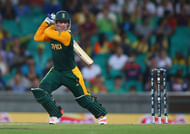
Howsoever relaxed the South Africans might have shown that they were during the innings break, there was no question of the palpable tension brewing in the ranks.
Of course, they would score 133 any other day. But would they in a knockout game? A genre of game they had never won before in 23 years? To make matters worse, at the stroke of lunch, their coolest and calmest influence, Hashim Amla was dismissed by Malinga.
The first ball after lunch, Malinga steaming in with his tail up bowled a fullish length delivery outside off stump, de Kock stood there and spanked the ball to the cover fence for four. That basically set the tone of the game therein. De Kock scored with such relative ease that there was never even scope for failure let alone a wholesome choke.
The youngest member of the South African side with no baggage of the past whatsoever, he led from the front like a man possessed with the wisdom of the Greek Goddess Athena. Quite fitting and ironic, one must admit, that amid all the tension in the South African camp, the nonchalance of a 22-year-old got them through without much ado.
Notable Exclusion
Chris Gayle: Gayle did come out all guns blazing against the Kiwis, but the maturity of de Kock’s innings plus Gayle’s reluctance to pace his innings and rather tonk everything out of the park worked against his favour.
#3 Steven Smith - 65 (69)
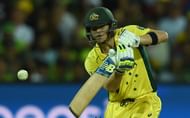
Steven Smith strode out to bat versus Pakistan with the scoreboard reading 15/1, probably sooner than he would have liked. However, in a typically unfazed manner that has gone on to define his career, he stood tall and played with maturity way beyond his age.
Coming into bat, Smith looked in all sorts of hurry to get the job done quickly, but once the Aussies slid to 59-3, he packed his attacking instincts in a suitcase and weathered the storm (more like a mini-apocalypse) that the fire of Wahab Riaz bestowed upon them.
By the time Smith was done, the Australians needed merely 68 more runs for victory, a formality that Glenn Maxwell achieved in double-quick time in his own unique style.
Notable Exclusion
Kumar Sangakkara: Coming into this game with 4 back-to-back centuries, Kumar Sangakkara must be livid with his teammates for throwing it away the way they did. However, Sangakkara was not at his fluent best either on the day which makes him lose out on his spot.
#4 Rohit Sharma - 137 (126)
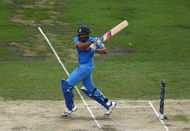
With the need to incorporate a wicket-keeping opener and an undroppable Guptill, the flexibility of Rohit Sharma was taken as an advantage in this case, slotting him in at No. 4.
The way Rohit begun his innings, it was evident he was on the lookout for runs and not just blocking it for the first five overs much like what we’ve grown used to seeing. With wickets falling in a canter around him near the 100-run mark, Rohit let go of his attacking instincts and played a more mature innings.
The Melbourne Cricket Ground, one of the largest cricket grounds in the world is not a venue where taking the fielder on can be termed as a wise decision. And Rohit held his shape and controlled his shots perfectly, dispatching them into the gaps instead.
By the time he was undone by a superb yorker, the damage in the game had been done and the result of the match had virtually been decided.
Notable Exclusion
Lahiru Thirimanne: In an innings where Sangakkara was hardly able to put bat on ball, Thirimanne stood out like a boss and counterattacked the Africans to awe striking perfection. His soft dismissal and the fact that he was unable to kick on means he misses out.
#5 Suresh Raina - 65 (57)
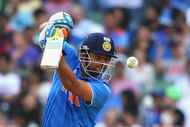
Another underrated innings from Suresh Raina, the Dark Knight of Indian cricket.
Fresh from a brilliant century against the Zimbabweans, he carried on from where he had left off, albeit cautiously. It is indeed uncharacteristic to see Rainas score reading 13 runs in 25 balls in an ODI.
However, once it was powerplay-o-clock, Raina did what he does best attack and attack like there is no tomorrow. Upto the point, the Bangladeshis had kept the Indians on a tight leash and it was a game that could go anywhere. By the time he was done, India were well on their way to yet another mammoth score.
5 years down the line, people will look at the scorecard andsay, Oh, a century against Zimbabwe and a half-century against Bangladesh, and probably none would rememberthe importance of both knocks in the context of the respective games.
Notable Exclusion
Glenn Maxwell: Though Maxwell scored at a relatively faster rate, his innings came in a match where the result was a foregone conclusion.
#6 Shane Watson - 64* (66)
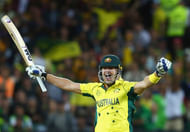
It is not easy when you are used to opening the innings and then randomly slotted here and there in the order. Shane Watson, though, would beg to differ.
Dropped after a rather ordinary game against England for the fit-again James Faulkner, Watson had to sit out for a game before making his return against Sri Lanka in place of Mitchell Marsh. A half-century there certainly gave him some breathing space.
However, Watson, dropped from the Aussie LOI side after ages, seemed a completely different person in the quarter-final game against Pakistan. Wahab Riaz, bowling one of the best spells ever seen in world cricket (more on that later) had him in all sorts of trouble, but Watson refused to just throw it away.
Indeed, Wahab had him worked out and a simple dolly was dropped in the field, but it takes nothing away from the grit and determination Watson played with. He stood there till the end, eventually making merry but ensuring Australia crossed the line in his watch.
Earlier in the day, he bowled a tight line and length exerting pressure on the Pakistani batsmen that eventually led to wickets from the other end.
#7 JP Duminy - 3/29
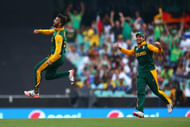
It is perhaps rare and eyebrow-raising that a part timer makes the list on the basis of his bowling performance alone, but JP Duminy certainly bowled the best spell he ever has in his South African career.
As a spinner, it is not child's play to get the better of the Sri Lankans for they are utterly and ruthlessly dominating against the tweakers. JP Duminy, not only swung the pendulum heavily in South Africa’s favour along with Tahir, he also has a hat-trick to show for his efforts.
This is a remarkable turnaround coming from a man who lost the plot so much against Pakistan that AB de Villiers had to come and fill in his quota of overs.
De Villiers provided some delightful insight on the hat-trick in the post-match presentation: “He told me the ball before (when asked if they knew about Duminy's hat-trick), listen I am on a hat-trick. Are you maybe going to give me another catcher? So I went to silly point and just the two of us knew it. I spread the message as soon he got the wicket that, you know it was a hat-trick and the guys were like, no it's not. The guys got pretty excited when they realised that it was a hat-trick.”
Notable Exclusion:
Ravichandran Ashwin and Ravindra Jadeja: Though the Indian duo bowled a tight line and length in the mid-overs, Duminy faced a tougher opposition and still came out on top.
#8 Wahab Riaz - 2/54
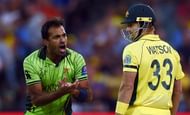
The figures may not make impressive reading on first glance, but pundits all over the world have hailed Wahab Riaz’s spell as the best in the current World Cup and comparable to Gary Gilmour’s 6/14, the best bowling performance ever according to Wisden.
And it would be imprudent to say the spell does not deserve it. It seemed like the fires of Babylon that had erupted in the mid-seventies had made its way to Lahore and a certain left-armer fired arrows coated with dragon’s venom on them.
At the end of the day, all Wahab has to show for it were two wickets at an economy of 6 runs per over. Had a couple of catches that should have been taken at this level not been grassed, it can be said with certainty that the match would have been a lot closer than it was.
Poor Watson, at the receiving end for most of the spell was hardly able to put bat on ball and but for a dropped catch would have made his way back to the hut with the score below 100, tipping the scales highly in favour of the Asian nation.
#9 Trent Boult - 4/44
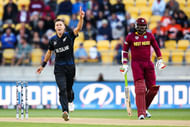
In a match where both teams raged rampant in terms of batting prowess, Trent Boult stood out like the ugly duckling.
Needing 394 to win, one would have probably felt the match was over in the first innings itself, but Boult still bowled beautifully, the state of the match notwithstanding. Opening the bowling against Gayle who was running rampant, But still held his own, finishing his spell without being taken off from the attack even once.
A couple of interesting stats to sum up Boult’s performance:
- Boult ended with an economy of 4.40. The second best economy of the innings was 8.92 by the generally miserly Daniel Vettori.
- Boult bowled 44 dot balls in his 10 overs, the rest of the team collectively bowled 49 in 20.3 overs.
#10 Josh Hazelwood - 4/35
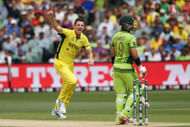
To begin with, to be the best seamer in an attack featuring Mitchell Johnson and Mitchell Starc in itself is quite an achievement. Coming in place of Pat Cummins who had 3 wickets in his previous game meant there was added pressure on Hazelwood to perform.
Seemingly unfazed, he begun by accounting for Ahmed Shehzad in his first spell. Coming on to bowl later, he picked up three more wickets in two spells, two of them frontline batsmen, thus ensuring the Pakistan innings never really got going.
Not only did he keep picking up wickets at regular intervals, he also held up his end really well, ending with an economy of 3.50. This is an even bigger achievement considering the fact that the opposition would have looked to target him rather than the “Mitch-duo” Australia posses.
#11 Imran Tahir - 4/26

Much like JP Duminy, Imran Tahir displayed one of the finer spells of leg spin against a Sri Lankan middle order that had 3 left-handers. After a sedate start, Thirimanne had really gotten into his groove and a partnership was threatening to take the game away from the Proteas. However, Tahir most certainly had other plans.
He started by surprising the in-form Thirmanne with extra bounce. Then came the major breakthrough and probably the game changing wicket of Mahela Jayawardene who looked to pull a ball that was not too short.
There was only one way the Sri Lankans could go from there – downwards. He later accounted for two more wickets, one of them being another left-hander – the dangerous Thisara Perera.
It was not only Tahir’s wickets that turned the game but the manner in which he got them. Even the veteran Kumar Sangakkara, known for his liking of leg-spinners could not get him away the way he would have liked.
Brand-new app in a brand-new avatar! Download CricRocket for fast cricket scores, rocket flicks, super notifications and much more! 🚀☄️
